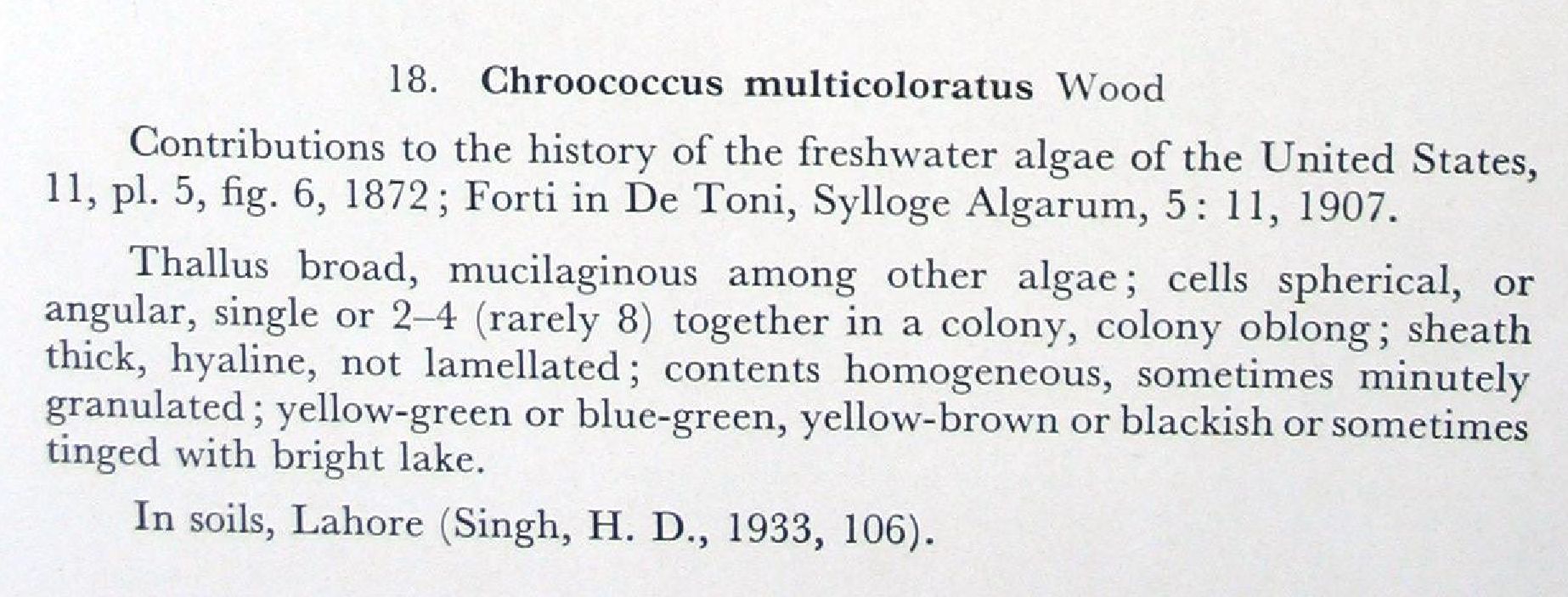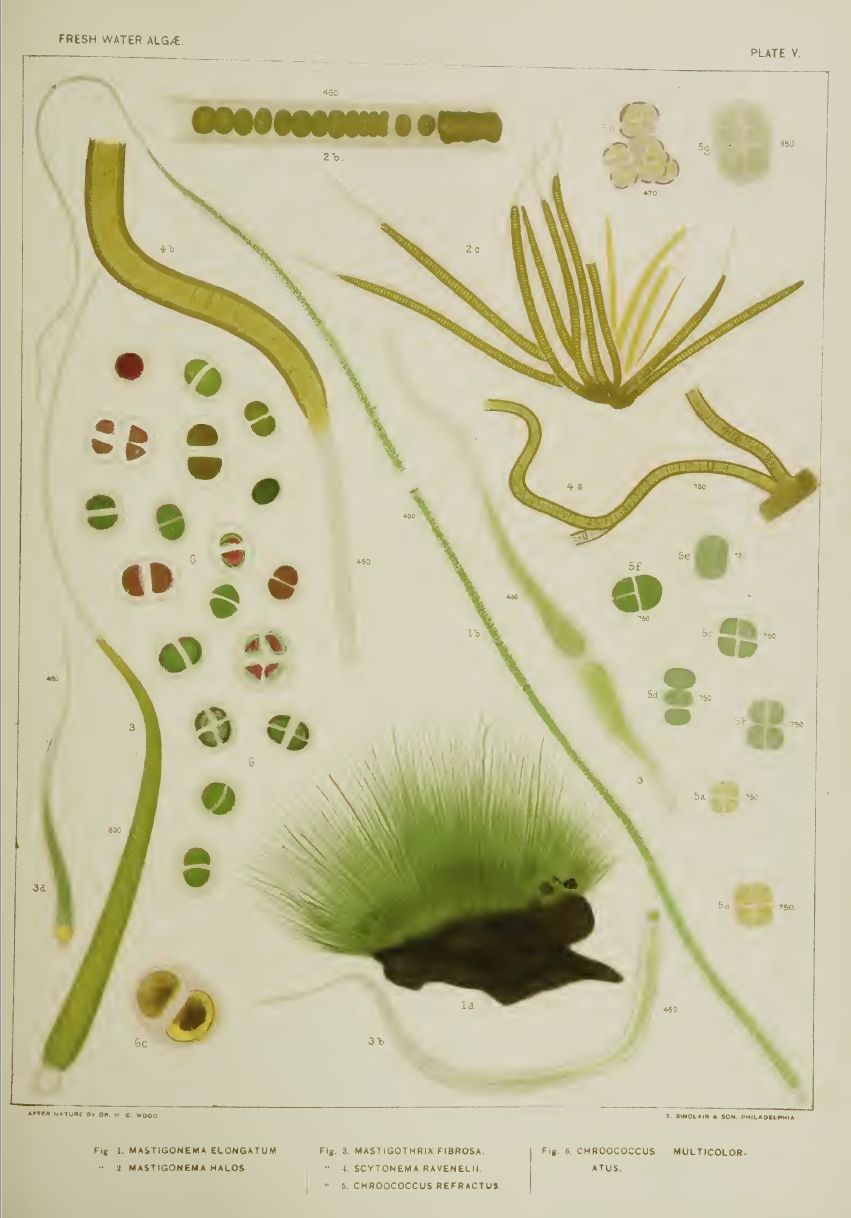Hallo Richard,
danke für deine Unterstützung. Man bestimmt halt immer so, wie die vorhandene Literatur das hergibt. Mittlerweile habe ich 2 neue Quellen zu Rate gezogen:
a) Cyanophyta von T.V. DESIKACHARY aus dem Jahr 1959. Eine Flora der Cyanos von Indien
b) A contribution to the history of the fresh-water algœ of North America
by Wood, H. C. (Horatio C.), 1841-1920; Published 1872 (siehe auch hier:
http://www.mikro-tuemplerforum.at/viewt ... f=49&t=459 )
Wobei a) wohl mehr oder weniger b) zitiert.
Ich glaube jetzt, dass es sich um C. multicoloratus handelt
Zitat aus a)

Zitat aus b)
"C. mnlticoloratus, Wood.
C. in strato mucoso inter algas varias sparsus ; cellulis singulis et sphsericis, vel 2-4 (rare 8) aut
angulis aut semisphaericis aut abnormibus in famiiias oblongas consociatis ; cytiodermate crasso,
hyalino, baud lamelloso; tegumentis plerumque nullis, interdum subnuUis; cytioplasmate plerumque
homogeneo, interdum subtiliter granulato, vel luteo-viride vel ceeruleo-viride vel luteo
vel subnigro, vel brunneo, vel saturate aurantiaco, ssepe ostro tincto.
Hub.—in rupibus humidis prope Philadelphia.
C. occurring scattered in a mucous stratum with other algse; cells spherical and single, or else
angular semi-spherical or irregular and associated together in oblong families of from 2-4
(rarely 8) ; inner coat thick, hyaline, not lamellate ; outer coat generally wanting, sometimes
indistinctly present; endochrome mostly homogeneous, sometimes minutely gra,nular, either a
yellowish-green or bluish-green, or yellowish or brown, or blackish, sometimes tinged with
bright lake.
The cells of this species do hot appear to have any tendency to unite to fotm
large masses or fronds. On the contrary they are generally very distinct. Their
color varies very much, in a larger number of instances they were a decided yellowish-
green, tinged at some point or other with a beautiful lake. When several cells
are formed by division out of one cell, a similar division of the very thick surrounding
gelatinous coat follows separating them finally entirely one from the other. I
have seen a single cell which appears to be an encysted form of this, of which I give
a drawing.
Fig. 6, pi. 5, represents different forms of this species magnified 260 diameters."
Bild aus b) :

Es passt die Farbe und die ungeschichtete Gallerte.
Cyanos sind eben schwierig!
Vielleicht kann ja noch jemand etwas dazu sagen.



